Some people would not miss adding oil as the first step of their cooking and baking. But then, is adding oil really necessary to cook pizza on a pizza stone? To stop you from wondering about adding oil to a pizza stone, we've compiled information from our research on how to prep it.
Whether to add oil to a pizza stone depends on the bakeware material. Pizza stones are made from various materials such as clay, tile, marble, and firebrick; some have glazed finishes, and some do not. If your pizza stone has a glazed finish, it can result in fine cracks and fissures: you should not add oil to these. But if your pizza stone is not a glazed surface, you can spread the oil to your liking.
Whether you prefer adding oil or not, you still need to understand the suggestions given by experts. See below the proper way of seasoning your pizza stone and how you can do it with the best oil you can use. Additionally, find out here what food you can cook on your pizza stone besides pizza.
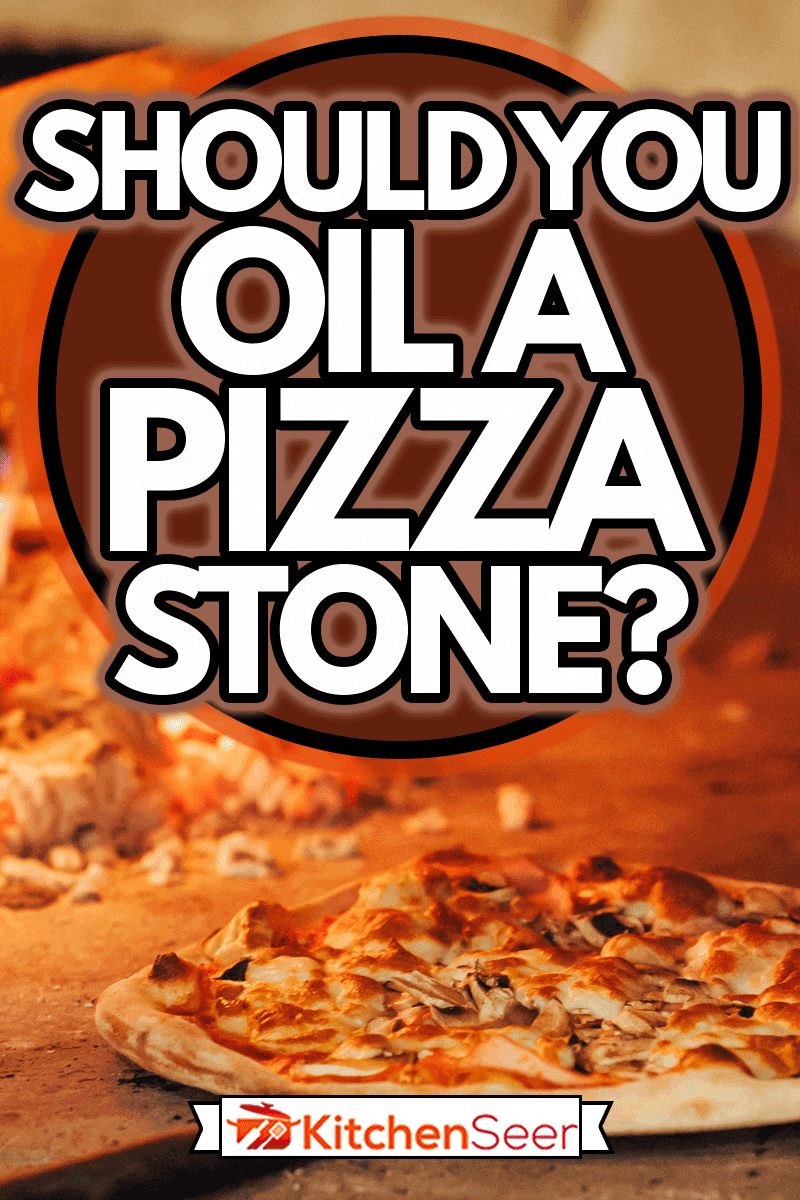
The Debate About Adding Oil to Pizza Stones
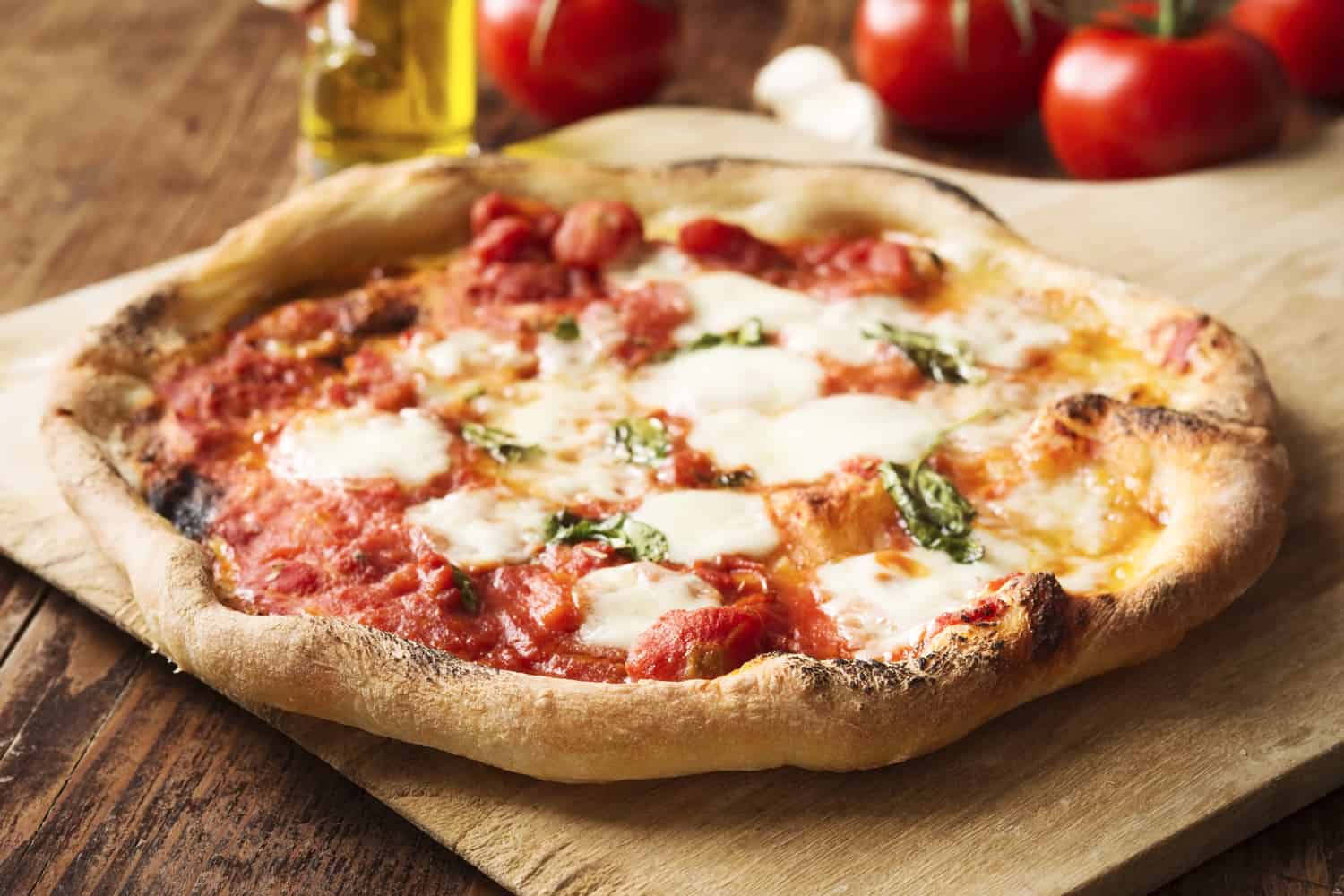
Some chefs prefer not to add oil to pizza stones as it might affect their materials. These bakers believe that pizza stones have non-stick qualities, preventing the food from sticking to the stone. And yet, other chefs suggest adding just the right amount of oil before baking, similar to regular cooking.
In this case, it is important for you to check the manufacturing instructions to see if oil is recommended for your pizza stone or not. You can also review your packing to find out if your pizza stone is glazed or not.
Steps to Cook Using A Glazed Pizza Stone

If you have a glazed pizza stone, here are the suggested steps from cooking experts:
- Preheat your oven to its maximum temperature for at least 30 minutes before placing the pizza stone inside.
- Place your baking stone in the middle rack of your oven.
- Put the pizza dough on a cornmeal-dusted paddle or cutting board and transfer it to the hot stone.
- Bake for about 10 to 12 minutes or until the crust is crisp and golden brown.
- Remove from the oven and immediately transfer to a wire rack or a wooden cutting board for slicing.
Steps to Cook Using An Unglazed Pizza Stone
As we mentioned earlier, some stones come glazed while others do not. If you have an unglazed stone, here are the steps for you:
- Preheat the oven to its maximum temperature for at least 30 minutes before placing the pizza stone inside.
- Place your baking stone in the middle rack of your oven.
- Generously coat the surface of your pizza stone with oil (about 1/8-inch thick). Make sure to use a high smoke point oil like canola, vegetable, or peanut oil. Do not use olive oil as it has a low smoke point, and it will burn easily.
- Allow the oiled surface to heat up in the oven for about 10 minutes.
- Take out the hot stone from the oven and put the pizza dough on a cornmeal-dusted paddle or cutting board.
- Transfer it to the hot oiled surface and immediately return it to the oven.
- Bake for about 10 to 12 minutes or until the crust is crisp and golden brown.
- Remove from the oven and immediately transfer to a wire rack or a wooden cutting board for slicing.
Baked Goods You Can Cook on a Pizza Stone
Pizza is not the only food you can cook on your baking stone as it can be versatile, too. Here are other baked goods you can try cooking on your pizza stone:
1. Bread
You can use your pizza stone for baking bread, giving it a crispy crust. Make sure to preheat the oven and the stone for at least 30 minutes before baking. When you are ready to bake, dust the surface of your stone with cornmeal and place the dough on top. Bake as usual.
2. Cookies
Cookies turn out great when baked on a pizza stone. For crispier cookies, make sure to preheat the oven and the stone for at least 30 minutes before baking. Place rolled-out cookie dough on a cornmeal-dusted surface and transfer it to the hot stone. Bake as usual.
For softer cookies, follow the same steps but reduce the baking time by a minute or two.
3. Roasted vegetables
Pizza stones work great in roasting vegetables like potatoes, carrots, and even cauliflower. Just preheat the oven and the stone for at least 30 minutes before roasting. Coat your vegetables with olive oil and season with salt and pepper. Place them on a cornmeal-dusted surface and transfer them to the hot stone. Roast in the oven until tender.
4. Crispy bacon
If you love crispy bacon, you will be happy to know that you can cook it on your pizza stone, too. Just preheat the oven and the stone for at least 30 minutes before cooking. Place strips of bacon on a cornmeal-dusted surface and transfer to the hot stone. Bake in the oven until crisp.
5. Fruit pies
Fruit pies turn out great when baked on a pizza stone. Just preheat the oven and the stone for at least 30 minutes before baking. Place the pie on a cornmeal-dusted surface and transfer it to the hot stone. Bake as usual.
Buy yourself a pizza stone and enjoy using it at home. See it on Amazon.
Pizza Stone Care and Maintenance
To keep your pizza stone in good condition, here are some tips on how to care for it:
- Do not wash with soap. Washing your pizza stone with soap will strip away the seasoning of the stone, making it less effective in cooking. If you need to clean it, just scrub it with a stiff brush and rinse with water.
- Do not put it in the dishwasher. The detergent and high heat from the dishwasher can damage your pizza stone.
- Season regularly if unglazed. To keep your pizza stone non-stick, make sure to season it with oil. You can do this by rubbing the stone's surface with oil before storing it.
- Store in a cool, dry place. Pizza stones are porous and can absorb moisture from the air, making them susceptible to mold and mildew. To prevent this, make sure to store your pizza stone in a cool, dry place.
- Do not use it on the stovetop
Pizza stones are not designed for stovetop cooking as they can crack from direct heat. If you want to cook on the stovetop, use a cast-iron skillet instead.
Complete your pizza baking set for a better cooking experience. Check it on Amazon.
Why do you need to season your pizza stone?
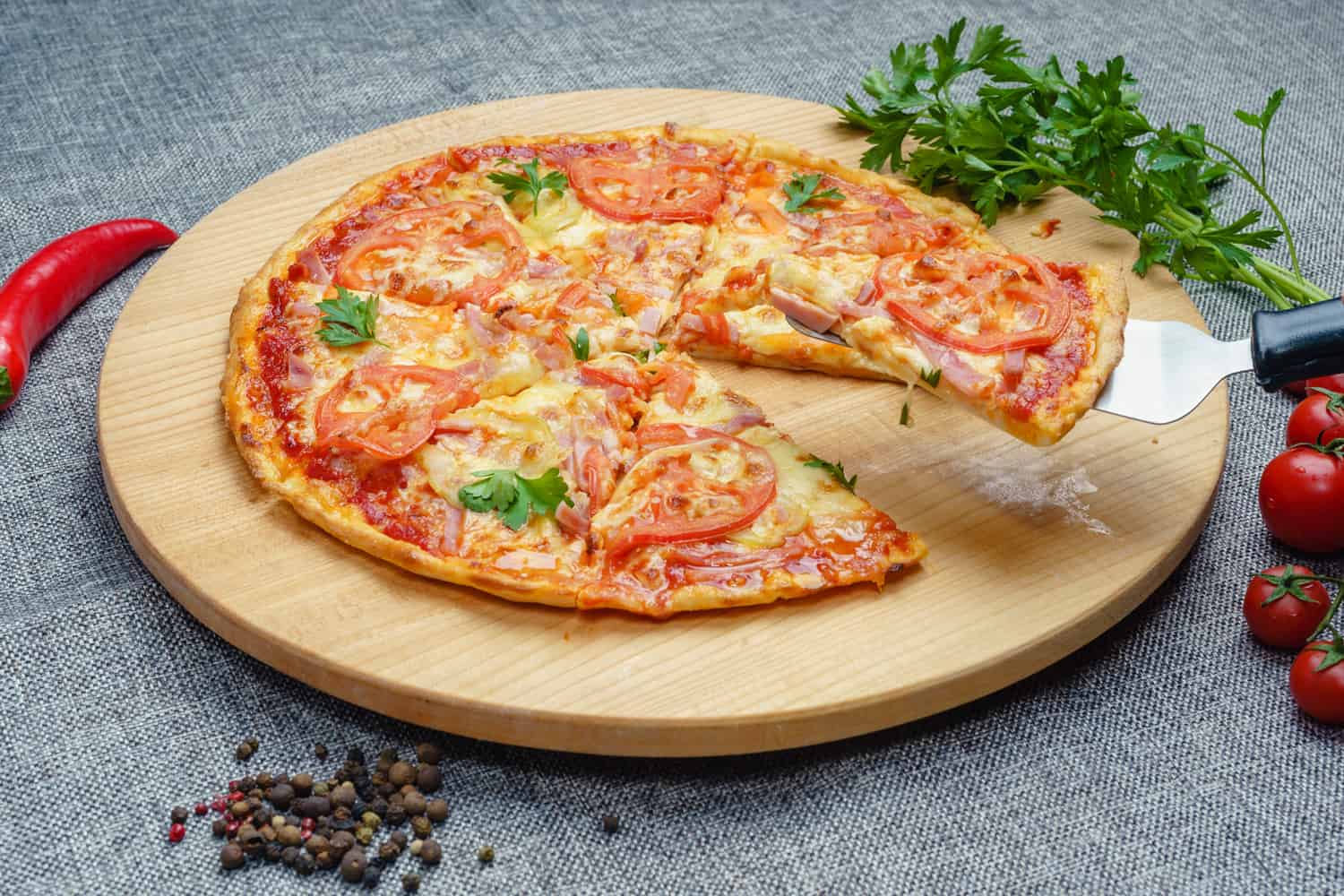
Seasoning your unglazed pizza stone helps to create a non-stick surface and prevents the stone from absorbing moisture from the dough. It also adds flavor to the crust.
What kind of oil do you use on a pizza stone?
When it comes to choosing an oil, there are a few things to keep in mind. You want an oil that has a high smoke point, so it won't start smoking at high temperatures. You also want an oil that is flavorless and has a neutral taste. Most people consider vegetable oil, grapeseed oil, and canola oil as good options.
Use vegetable oil for your unglazed pizza stone. View it on Amazon.
How do you keep pizza from sticking to the pizza stone?
Some people will use a pastry brush to spread oil over the surface of the stone, while others will pour oil onto the stone and spread it around with a spoon or spatula. You can also put the pizza stone in the oven and spray it with cooking oil.
Conclusion
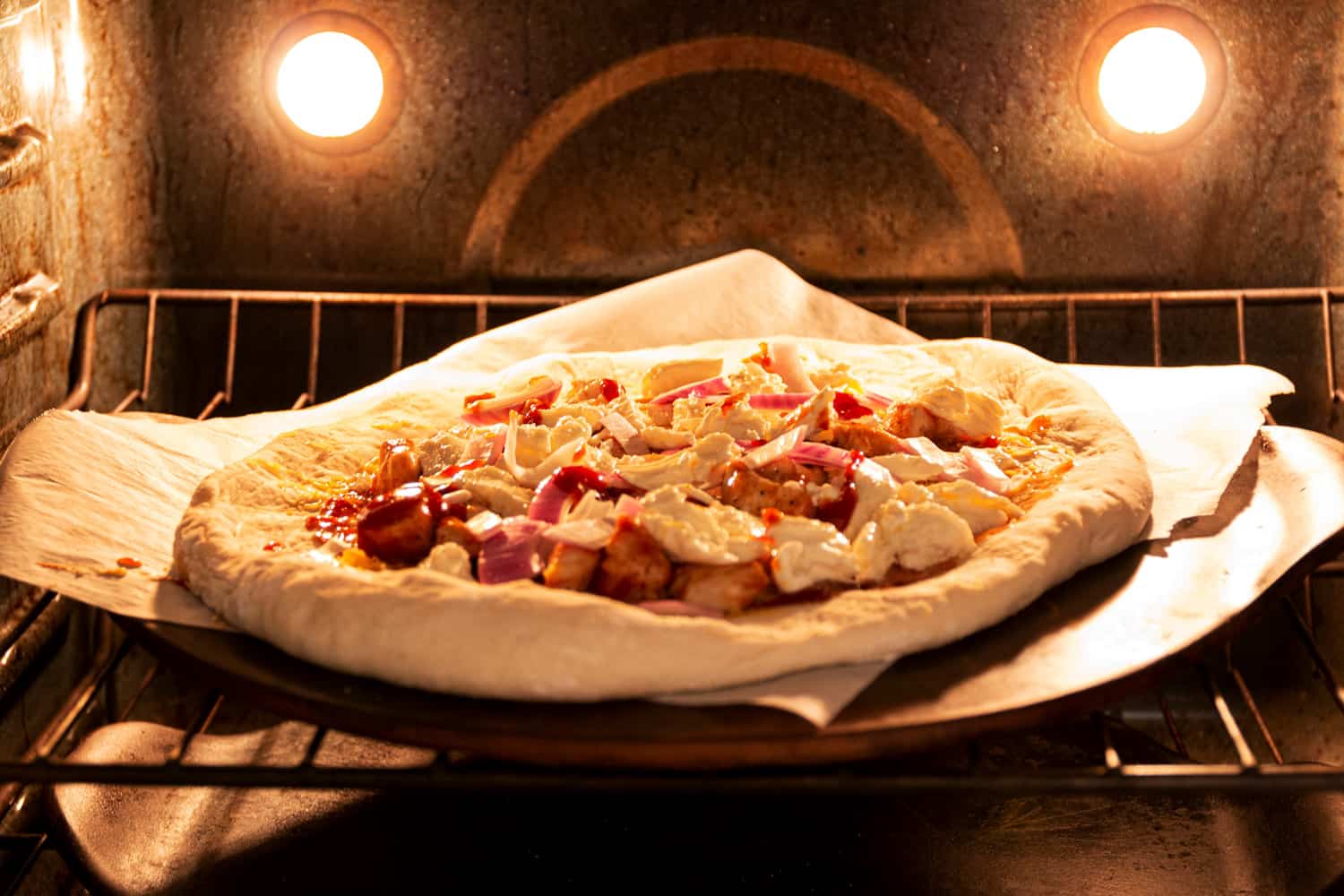
Pizza stones are great for more than just pizzas. They can be used to make cookies, roasted vegetables, bacon, and fruit pies. But what's more important is to know if your pizza stone has a glazed or unglazed feature. It would help you see the best way of preparing the pizza stone before cooking.
To learn more about different baking utensils and how to use them in the best way, see the following details below:
Should You Preheat a Pizza Stone?
Should You Grease Loaf Pans For Bread?
What To Use Instead Of A Pie Pan [6 Alternatives]





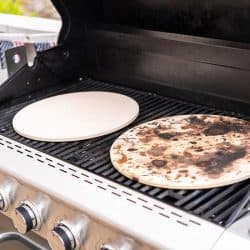



![Pizza boxes stack isolated on white - How Big Is A Pizza Box [By Brand]](https://kitchenseer.com/wp-content/uploads/2022/04/Pizza-boxes-stack-isolated-on-white-250x250.jpg)